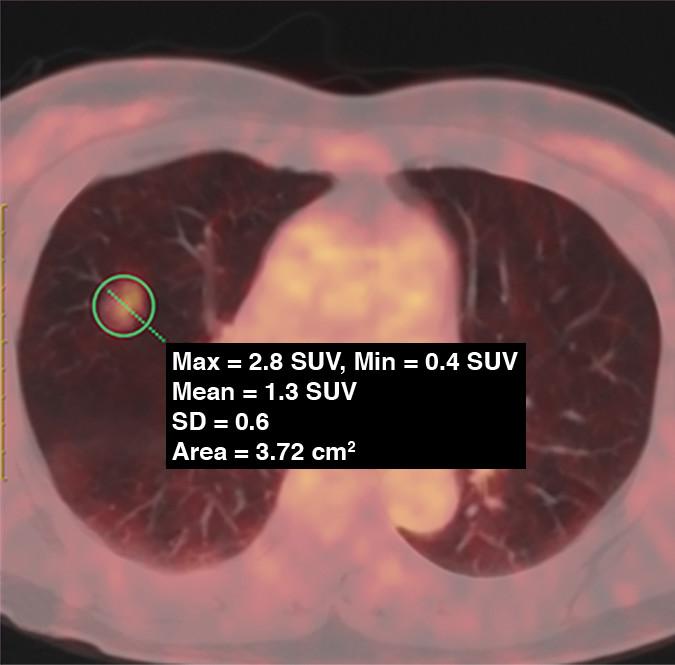AJR finds fluorodeoxyglucose PET, combined with high-resolution CT, has value for predicting invasive histopathologic subtypes of early lung adenocarcinoma

Credit: American Journal of Roentgenology (AJR)
Leesburg, VA, December 16, 2019–According to an article published ahead-of-print in the February 2020 issue of the American Journal of Roentgenology (AJR), fluorodeoxyglucose PET (FDG PET) can be used to predict the histopathologic subtypes and growth patterns of early lung adenocarcinoma.
“FDG PET, combined with high-resolution CT (HRCT), has value for predicting invasive histopathologic subtypes, but there was no significance for predicting invasive growth patterns,” clarified lead author Xiaoliang Shao from the department of nuclear medicine at Soochow University in Changzhou, China.
Shao and colleagues’ retrospective analysis was conducted on the PET/CT data on ground-glass nodules (GGNs) resected from patients with stage IA lung adenocarcinoma, evaluating the efficacy of PET maximum standardized uptake value (SUVmax) combined with HRCT signs in prediction of histopathologic subtype and growth pattern of lung adenocarcinoma.
Although SUVmax measured significantly higher in GGNs with invasive HRCT signs, the diameter of GGN, as well as the attenuation value differential between ground-glass components and adjacent lung tissues, were independent predictors of FDG uptake by GGNs.
Additionally, SUVmax was higher in invasive adenocarcinoma than in adenocarcinoma in situ (AIS)-minimally invasive adenocarcinoma (MIA), with SUVmax 2.0 the optimal cutoff value for differentiation.
Acinar-papillary adenocarcinoma had a higher SUVmax than lepidic adenocarcinoma, with SUVmax 1.4 the optimal cutoff value for differentiation.
“In stage IA lung adenocarcinoma characterized by GGNs, the SUVmax of GGNs with invasive CT features was high,” Shao wrote, adding that HRCT can be used in diagnosing the subtypes of lung adenocarcinoma.
“However, it cannot be used to differentiate different growth patterns of lung adenocarcinomas.”
As Shao concluded: “The efficacy of FDG PET SUVmax in differentiating lung adenocarcinoma subtypes is similar to that of HRCT signs, however, the diagnostic efficiency of FDG PET combined with HRCT is significantly higher than that of each imaging technique alone.”
###
Founded in 1900, the American Roentgen Ray Society (ARRS) is the first and oldest radiology society in the North America, dedicated to the advancement of medicine through the profession of radiology and its allied sciences. An international forum for progress since the discovery of the x-ray, ARRS maintains its mission of improving health through a community committed to advancing knowledge and skills with an annual scientific meeting, monthly publication of the peer-reviewed American Journal of Roentgenology (AJR), quarterly issues of InPractice magazine, AJR Live Webinars and Podcasts, topical symposia, print and online educational materials, as well as awarding scholarships via The Roentgen Fund®.
Media Contact
Logan K. Young
[email protected]
703-858-4332
Original Source
https:/
Related Journal Article
http://dx.




